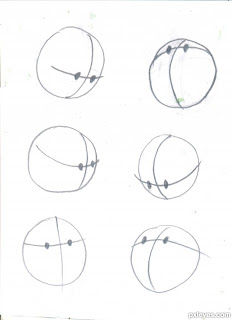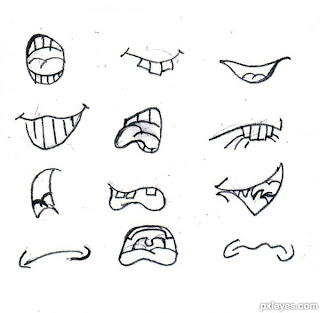Photoshop မွာ Default ထည့္ေပးထားတဲ့ Pattern ေတြကေတာ့ Continuous ျဖစ္ေအာင္ ဖန္တီးေပးထားၿပီးျဖစ္ပါတယ္။ Continuous pattern ဆိုတာကေတာ့ Indefinitely Fill လုပ္ႏိုင္ၿပီး တစ္ခုနဲ႔တစ္ခုၾကားထဲမွာ ဆက္ရာရွာမရတဲ့ Pattern ေတြကို ဆိုလိုတာပါ။







 အျခားေသာ Brick, Tile, Grill အစရွိတာေတြကို Continuous ျပဳလုပ္တာကေတာ့ ဒီ Tutorial အတိုင္းျဖစ္ေပမယ့္ အနည္းငယ္ပို လက္၀င္ၿပီး စိတ္ရွည္ရပါတယ္။ ေနာင္ Tutorial ေတြမွာ အလ်ဥ္းသင့္ရင္ ေျပာျပေပးသြားပါမယ္။
အျခားေသာ Brick, Tile, Grill အစရွိတာေတြကို Continuous ျပဳလုပ္တာကေတာ့ ဒီ Tutorial အတိုင္းျဖစ္ေပမယ့္ အနည္းငယ္ပို လက္၀င္ၿပီး စိတ္ရွည္ရပါတယ္။ ေနာင္ Tutorial ေတြမွာ အလ်ဥ္းသင့္ရင္ ေျပာျပေပးသြားပါမယ္။
ဒီတစ္ေခါက္ Tutorial ကေတာ့ အဲလို Continuous pattern မ်ားကို ဖန္တီးျခင္းျဖစ္ပါတယ္။ ဒီလိုဖန္တီးထားတဲ့ Pattern ေတြကို Jpeg အေနနဲ႔ Save လုပ္ၿပီး အျခားေသာ AutoCAD, 3D Studio Max အစရွိတဲ့ Software ေတြမွာ Plug-in အေနနဲ႔လည္း အသံုးျပဳႏိုင္ပါေသးတယ္။
၁) ပထမဦးဆံုး New File (110 pix - 80 pix) တစ္ခု ဖြင့္ပါ။ ပံုမွန္အားျဖင့္ Square pattern မ်ားကို ဖန္တီးၾကပါသည္။ ဒီ Tutorial မွာေတာ့ ပိုရွင္းသြားေအာင္ Rectangular Pattern လုပ္ျပျခင္းျဖစ္ပါသည္။
ၿပီးရင္ (Filter > Render > Fiber) ျဖင့္ အလြယ္ဆံုး Pattern တစ္ခုကို Fill လုပ္လိုက္ပါ။ Pattern နဲ႔ ပိုတူသြားေအာင္ အဲဒီအေပၚမွာ ခပ္႐ႈပ္႐ႈပ္ Line ေတြကို Brush Tool ျဖင့္ ဆဲြလိုက္ပါတယ္။
ၿပီးရင္ (Filter > Render > Fiber) ျဖင့္ အလြယ္ဆံုး Pattern တစ္ခုကို Fill လုပ္လိုက္ပါ။ Pattern နဲ႔ ပိုတူသြားေအာင္ အဲဒီအေပၚမွာ ခပ္႐ႈပ္႐ႈပ္ Line ေတြကို Brush Tool ျဖင့္ ဆဲြလိုက္ပါတယ္။
အဲဒီ ပံုကို Continuous Pattern အျဖစ္ ေျပာင္းပါမယ္။
၂) Filter > Other > Offset သုိ႔၀င္ပါ။ Offset တန္ဖိုးမ်ားအျဖစ္ Horizontal = 55 pix နဲ႔ Vertical = 40 pix အသီသီးထားပါမယ္။ မူလပံုတစ္ခုလံုး Pixel တန္ဖိုးမ်ားရဲ႕ တစ္၀က္ဆီျဖစ္ပါတယ္။ ဒါဆိုရင္ ေအာက္ကအတိုင္းေတြ႕ရမွာပါ။
၂) Filter > Other > Offset သုိ႔၀င္ပါ။ Offset တန္ဖိုးမ်ားအျဖစ္ Horizontal = 55 pix နဲ႔ Vertical = 40 pix အသီသီးထားပါမယ္။ မူလပံုတစ္ခုလံုး Pixel တန္ဖိုးမ်ားရဲ႕ တစ္၀က္ဆီျဖစ္ပါတယ္။ ဒါဆိုရင္ ေအာက္ကအတိုင္းေတြ႕ရမွာပါ။
၃) Clone Stamp Tool ကို အသံုးျပဳၿပီး အလယ္မွ ဆက္ရာကဲ့သို႔ျဖစ္ေနေသာ ေနရာမ်ားကို ဖာေထးပါ။ Brush ကေတာ့ Soft rounded brush ပဲျဖစ္ပါတယ္။ ဒီေနရာမွာ သတိထားရမွာက ပံုရဲ႕အနားစြန္းမ်ားကို မထိမိေစရန္ဂ႐ုစိုက္ပါ။
ၿပီးလွ်င္ေတာ့ ပံုအတိုင္းေတြ႕ရပါမည္။
၄) ဒီပံုကို (Edit > Define Pattern) ျဖင့္ Save လုပ္ၿပီး Paint Bucket Tool, Pattern ျဖင့္ Fill လုပ္ၿပီး အသံုးျပဳႏိုင္ပါၿပီ။
အခုနမူနာလုပ္ျပထားတဲ့ Pattern က နားလည္လြယ္ေအာင္ အျဖဴအမည္းနဲ႔ လုပ္ျပထားျခင္းျဖစ္ပါတယ္။ ၿပီးေတာ့ အဆင့္ (၃) Clone Stamp လုပ္တဲ့ေနရာမွာ ပံုရဲ႕ အနားစြန္းေတြကို ထိခိုက္မိတဲ့အတြက္ Continuous pattern စစ္စစ္မျဖစ္ေသးပါဘူး။ Fill လုပ္တဲ့ ၾကားထဲမွာ ဆက္ရာေတြ ေပၚေနေသးတာကို ေတြ႕ႏိုင္ပါတယ္။ အဲသလိုဆိုရင္ အဆင့္ (၂) ျဖစ္တဲ့ Offset Filter ကို တစ္ေခါက္ျပန္၀င္ၿပီး Clone Stamp ကို ျပန္လုပ္ရပါလိမ့္မယ္။ အကယ္၍ Clone အလုပ္မ်ားသြားျပန္ရင္လည္း ပံုက ၀ါးသြားတတ္ပါတယ္။ ဒါကိုေတာ့ လိုအပ္သလို ခ်ိန္ဆရမွာျဖစ္ပါတယ္ေနာ္…။
တကယ္တမ္းေျပာရရင္ ဒီနည္းကို အသံုးျပဳျခင္းျဖင့္ မိမိကိုယ္တိုင္ ဓာတ္ပံု႐ိုက္ထားတဲ့ (ဒါမွမဟုတ္) Photo Blog ေတြမွာ အလြယ္တကူရႏိုင္တဲ့ Sand, Granite, Gravel, Fiber အစရွိေသာ Pattern မ်ားကို Continuous pattern မ်ားအျဖစ္ အလြယ္တကူျပဳလုပ္ႏိုင္ပါတယ္။
တကယ္တမ္းေျပာရရင္ ဒီနည္းကို အသံုးျပဳျခင္းျဖင့္ မိမိကိုယ္တိုင္ ဓာတ္ပံု႐ိုက္ထားတဲ့ (ဒါမွမဟုတ္) Photo Blog ေတြမွာ အလြယ္တကူရႏိုင္တဲ့ Sand, Granite, Gravel, Fiber အစရွိေသာ Pattern မ်ားကို Continuous pattern မ်ားအျဖစ္ အလြယ္တကူျပဳလုပ္ႏိုင္ပါတယ္။












